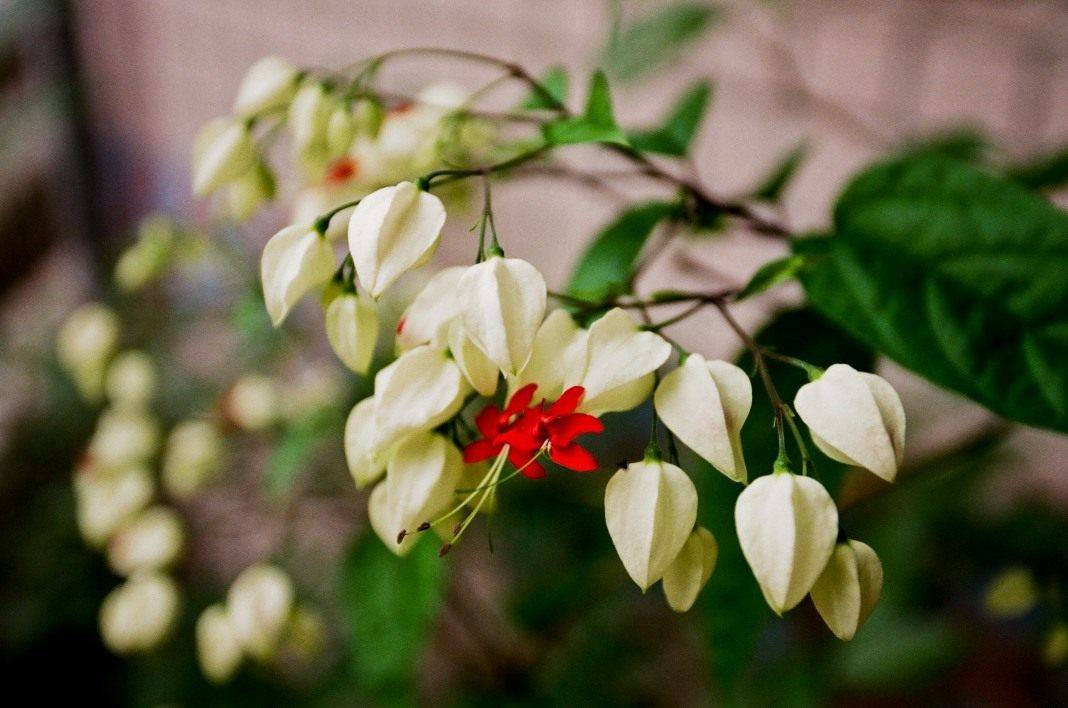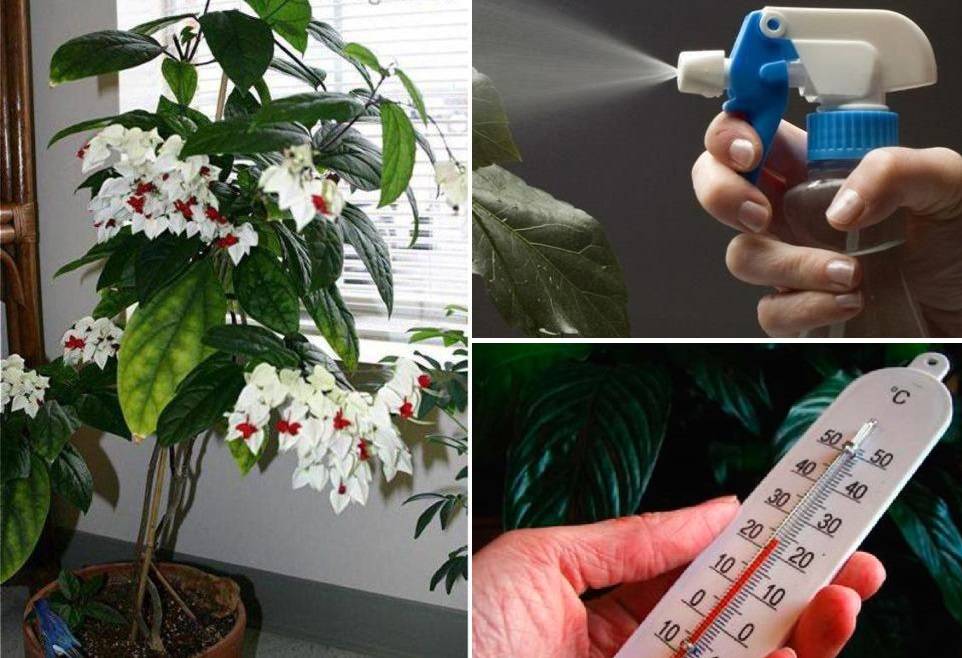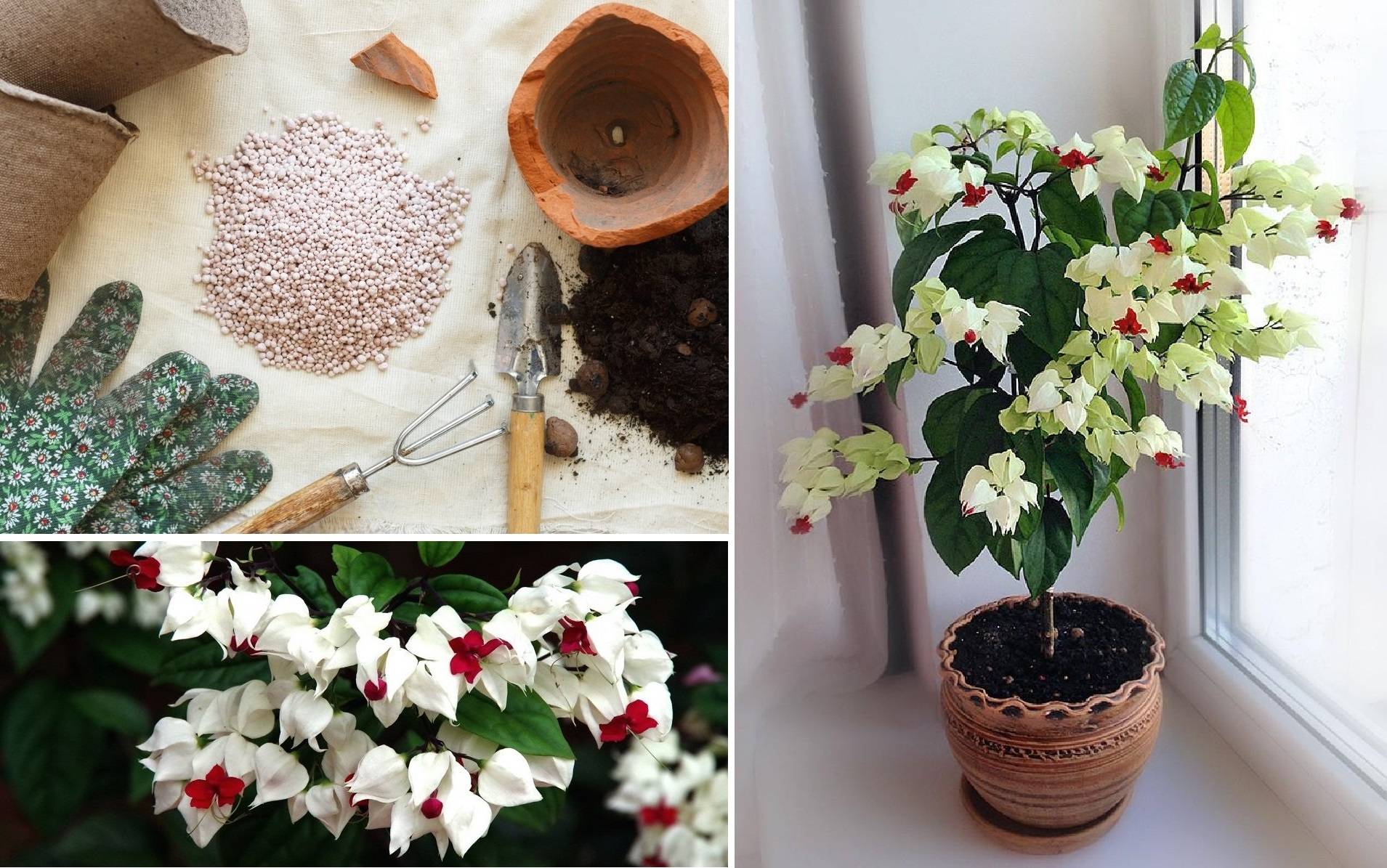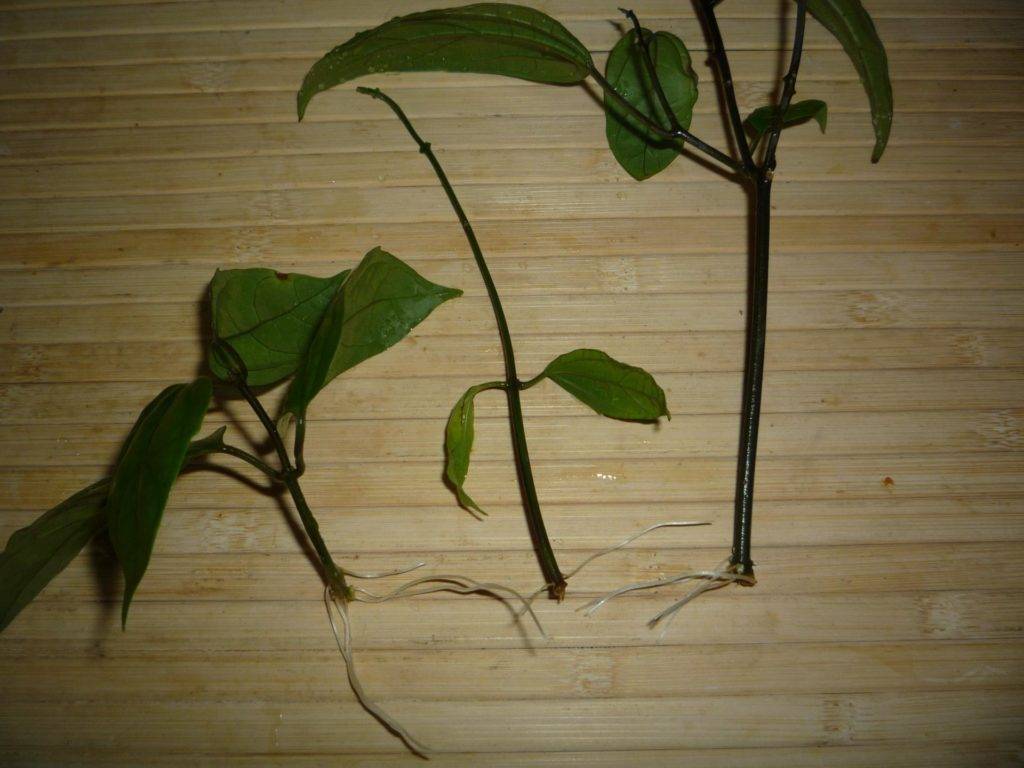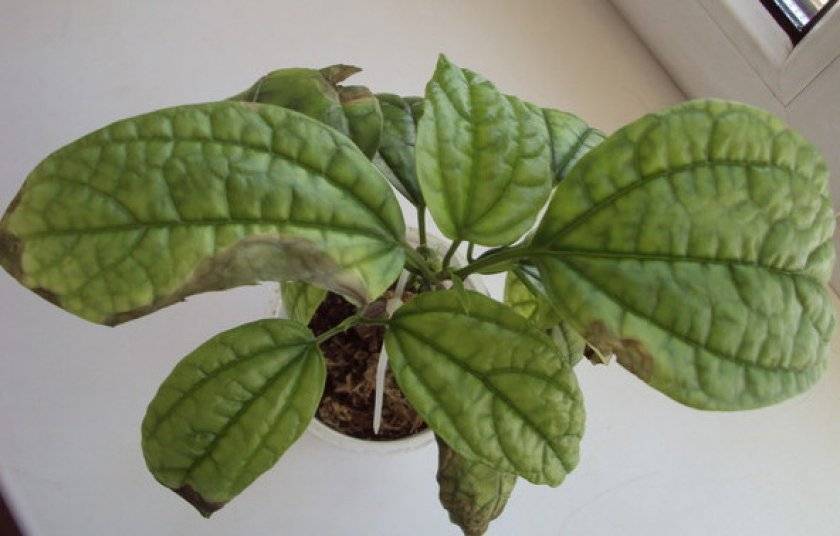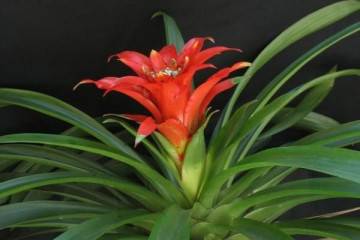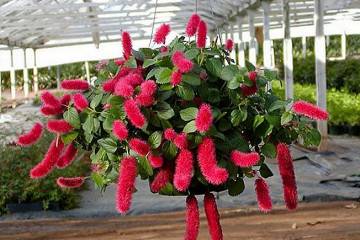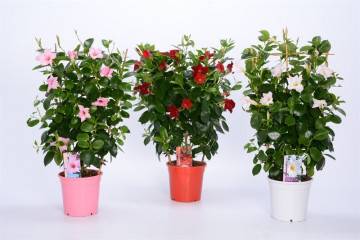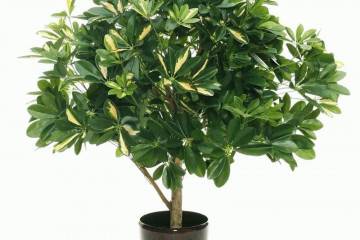Clerodendrum Thompson - home care
Content:
In flower shops, you can buy many unusual exotic plants, including clerodendrum. While not all varieties are suitable for home cultivation, Thompson's Clerodendrum is an exception. Exactly following the rules of care, you can not only breed this plant as an indoor plant, but also achieve its flowering.
Description and characteristics of the plant
Ms. Thompson's Clerodendrum is a tropical deciduous variegated plant belonging to the Verbenov family. His homeland is hot West Africa, and the name literally means "the tree of fate."
In a tropical climate, woody branches can stretch more than 4 meters, while in an apartment their length will be about 2-2.5 meters. Leaves are elongated teardrop-shaped, up to 10 cm long, with pronounced protruding veins. Abundant flowering, twice a year (in spring and autumn). The flowers are surrounded by lanterns of briquettes with a diameter of 3 cm and are collected in clusters of 15 or more pieces. Corollas with stamens wither rather quickly, leaving behind perianths of pink, white, burgundy and purple.
Thomson's Clerodendrum - home care, why the plant does not bloom
In order for this whimsical guest to take root, he needs special care. The creation of favorable conditions consists of the use of standard agricultural practices: choosing the right place, creating a temperature regime, regular watering and spraying, maintaining humidity in general, and timely feeding.
Location selection
Having brought Clerodendrum Thomson home, you should place it in a lighted place, without drafts, and ensure sufficient watering. It is recommended to transplant no earlier than 2 weeks later, when the plant recovers from stress and gets used to new conditions.
Temperature
A suitable temperature for a plant during the flowering period is +25 ° C, in winter it should not exceed +16 ° C. Excessive heat during the dormant period leads to sluggish flowering.
Lighting
The place where the clerodendrum is located should be well lit, but at the same time protected from direct sunlight. Even during the dormant period, when a lower temperature is preferable for the plant, there should be enough light for it.
Watering
Waterlogging and excessive dryness are fatal for the clerodendrum. Watering is carried out regularly, but only after the soil dries out, especially in winter, when the plant is dormant. During the growing season, in spring and summer, watering should be abundant. For these purposes, the settled water is used.
Spraying
When the air in the room is dry - in summer or during the heating season - the plant must be additionally sprayed. If clerodendrum has completely dropped the foliage for the winter, then it does not need spraying: it is enough to remove it away from radiators.
Humidity
In addition to spraying, which is so necessary for the clerodendrum, it is advisable to maintain a sufficient level of humidity in the room where it is located. To do this, you can use a container with water, which is placed next to the flower. Or purchase an electric humidifier. In winter, you can hang a damp towel on the hot radiators.
Priming
For the cultivation of clerodendrum, the soil mixture is used nutritious, well-retaining moisture, with neutral acidity. You can make it yourself from earth, sand and peat, in a ratio of 1/1/1, or use a ready-made one purchased in a store. In the latter case, you will need a specialized soil for roses and azaleas (4: 1).
Top dressing
Top dressing of clerodendrum is carried out often, with a weekly interval introducing mineral complexes of fertilizers for flowering plants. This is especially true for the spring flowering period. The optimal use of fertilizing in the form of granules can be considered so that the replenishment of the soil is gradual.
Support
In order for the shoots of the liana plant to be able to curl and weave, a high and stable support is installed right in the pot. You can use a purchased arch or ladder, on which the long shoots of the clerodendrum are very nicely placed, or you can simply pull on a strong rope that the plant can cling to during growth.
Transfer
Clerodendrum requires regular transplants. Young plants need the procedure every spring, adult plants are transplanted every 3 years. The pot into which it is planned to transplant the plant is treated with boiling water and potassium permanganate for disinfection.
Step-by-step sequence for planting clerodendrum:
- select a suitable pot;
- drainage is laid on the bottom of the pot;
- make a layer of soil mixture on top of the drainage;
- pruning shoots;
- the plant is taken out of the previous pot and the rhizome is cleaned from the soil, removing non-viable parts;
- the roots of the plant are carefully placed in a new container and sprinkled with earth, filling the voids and lightly pressing down with your hand;
- spend plentiful watering.
Pruning
Clerodendrum requires regular shaping and sanitary pruning. In the first case, the procedure is performed at the beginning of spring, prompting the plant to release new shoots, which will actively grow and bloom profusely. In this case, the plant can be given the shape of a bush by pinching the tops of the shoots, or a tree, removing all side shoots except for the main trunk.
Measures for sanitary pruning last year-round and consist in the timely removal of withered inflorescences, dried and yellowed leaves and shoots. Taking care of the flower in this way will make it bloom.
Reproduction
Clerodendrum is propagated by seeds or cuttings.
Seeds
Seed planting is carried out in the spring, pouring a substrate of peat and sand into the container. Seeds are laid out on the surface, moistened by spraying and covered with foil. Such a mini-greenhouse is placed in a warm place with sufficient lighting, ventilated and humidified daily. After the shoots appear, the film is removed completely, and when each sprout has 4 leaves, they are dived.
Cuttings
To propagate the plant by cuttings, young shoots cut and place them in water, adding a root growth stimulant there. When enough root processes are formed, the cuttings are planted in temporary containers with a diameter of at least 6 cm.
Dormant period
CLerodendrum thomsoniae, like most exotic flowering plants, requires a dormant period that lasts from about November to March. At this time, the plant is not fed, watering is reduced to a minimum.The temperature of the content changes to cool, which allows for the subsequent abundant flowering.
Do not be alarmed if the bush begins to shed its leaves - this is normal for representatives of its species. When this happens, the spraying of the plant is also stopped.
Pests and diseases
Clerodendrum Thompson can be attacked by pests: spider mites, whiteflies, scale insects and mealybugs. Having found insects on the leaves of a plant, they should be removed, and the flower itself should be washed with soapy water, treated with alcohol and insecticidal preparations.
Of the diseases, powdery mildew is the most dangerous. In case of its appearance, the leaves bearing signs of the disease are removed, and the flower of Mrs. Thompson's clerodendrum plant is sprayed with fungicides.
Care errors and problems
Inaccuracies in care can lead to the fact that the plant begins to show various signs of ill health. The following problems may occur:
- leaves and / or flowers fall;
- leaves begin to turn completely or partially;
- dark spots appear on the leaves;
- elongation of shoots and reduction of leaves in size.
All this indicates a violation of the growing and care conditions. The measures taken should be reviewed, ensuring the appropriate temperature, watering and air humidity, sufficient feeding and timely pruning.
Compliance with the above rules will allow you to grow a capricious exotic plant. Caring for Thompson's Clerodendrum at home is not so difficult, and the plant always responds gratefully to it, surprising and delighting with its bright lush brushes.
